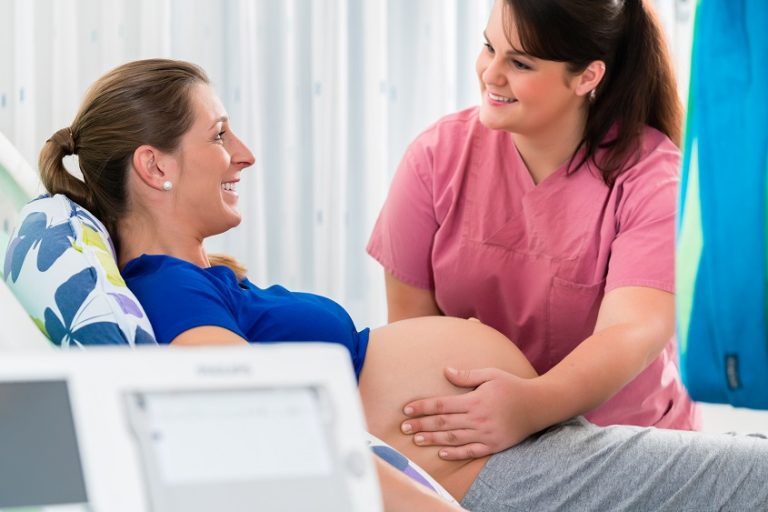Browsing: Women Health

The page provides quick access to a list of common diseases, syndromes, health conditions, and other topics of health importance pertaining to women’s health. The list is organized alphabetically. Links are provided to respective diseases sections that serve as a comprehensive and ultimate guide about the disease or health condition.
A gynecological disorder involves damage or risk to any female reproduction organ, which includes the abdominal and pelvic area, i.e., ovaries, uterus, fallopian tubes, vagina, vulva and breasts. Some of these disorders can even affect the proper functioning of the reproductive system and may create difficulty during pregnancy or child birth.
Healthcare professionals believe that every woman may suffer from one or another type of gynecological condition at some point in their life. In the past few years, the incidence of few gynecological disorders has sternly increased such as endometriosis, uterine fibroids and breast cancer. They have not only affected adult women, but teenage girls also have shown high incidence of certain gynecological diseases.
From puberty till menopause, a woman’s reproductive organs are continuously changing due to sexual activity, pregnancy and aging. These changes occur due to variation in hormonal levels in the body. An injury or a disease can also affect your reproductive system, leading to a gynecological disorder.
Common gynecological disorders include dysmenorrhea, vulvodynia, chronic pelvic pain, breast cancer, polycystic ovary syndrome, endometriosis, uterine fibroids, vaginitis and menstrual cramps.
Factors That Affect Fertility: What You Should Know
The article discusses various factors that can affect fertility in both men and women. It covers lifestyle choices such as diet, exercise, and substance use, as well as medical conditions that can impact fertility. Age is also discussed as a significant factor in fertility, as fertility declines with age in both men and women. The article emphasizes the importance of understanding these factors and taking steps to optimize fertility, including seeking medical advice and making lifestyle changes.
Exercise During Pregnancy: Safe and Effective Workouts
Exercising during pregnancy can be safe and beneficial for both the mother and the baby. Pregnant women should follow certain guidelines to exercise safely, including staying hydrated, wearing appropriate clothing and shoes, avoiding certain exercises and activities, and monitoring their heart rate. Low-impact exercises such as walking, swimming, and prenatal yoga are generally safe, while high-impact exercises and contact sports should be avoided.
This article highlights the early signs of pregnancy, including missed periods, nausea, breast changes, fatigue, and more. It also covers additional symptoms such as cramping, headaches, constipation, and an increased sense of smell. By recognizing these signs and seeking medical care early on, women can enjoy a healthy and happy pregnancy journey.
Understanding your ovulation window is essential for women looking to conceive. This article explores various ways to calculate your ovulation window, including tracking your menstrual cycle and using ovulation predictor kits. Other factors that can affect your ovulation window, such as stress and age, are also discussed.
Pregnancy Nutrition: What to Eat When You’re Expecting
Pregnancy is a critical time for both the mother and the developing fetus. Proper nutrition during pregnancy is essential for a healthy pregnancy, delivery, and a healthy baby. A balanced and nutrient-rich diet can help prevent complications during pregnancy and ensure that both the mother and baby are getting the necessary nutrients for proper development.
There are many tips and strategies for increasing your chances of getting pregnant. These include understanding your menstrual cycle, maintaining a healthy lifestyle, tracking ovulation, seeking medical help if necessary, and considering alternative therapies like acupuncture and fertility massage. By taking care of your overall health and seeking out appropriate medical advice and support, you can increase your chances of achieving your dream of starting a family. Remember, patience and persistence are key, and with the right approach, you can improve your odds of getting pregnant.
The article aims to educate readers about the benefits of natural techniques for boosting fertility. By the end of the article, readers will have a comprehensive understanding of the different natural techniques and lifestyle changes they can make to increase their chances of conceiving a child.
Taking a pregnancy test is an important step for those looking to start or expand a family. It is recommended to wait at least a week after a missed period for the most accurate results. There are two main types of tests, urine and blood tests, and both have high accuracy rates when taken correctly and at the right time. False negatives can occur if taken too early or if the test is not taken correctly.
This article explains how to recognize the signs of ovulation and determine your most fertile time. It offers tips for identifying your fertile window, including charting basal body temperature, tracking cervical mucus, and paying attention to your body’s symptoms. It also discusses lifestyle habits that can boost fertility, such as maintaining a healthy weight, eating well, exercising, reducing stress, and avoiding smoking and excessive alcohol consumption.
Understanding Your Menstrual Cycle: The Basics is a comprehensive guide that highlights the importance of understanding menstrual health, identifying potential health issues, and taking control of one’s reproductive health. It emphasizes the significance of education, communication, and self-care in promoting menstrual health and wellbeing.













